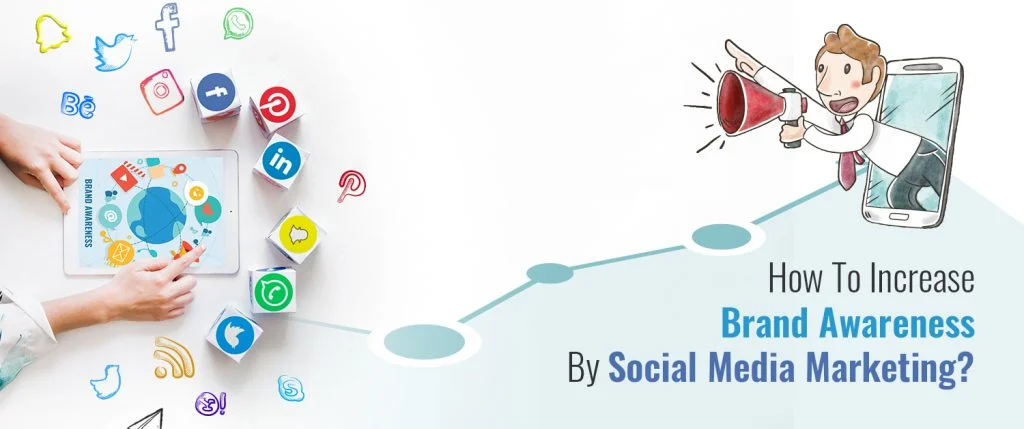What is brand equity?
Brand equity is the worth of a brand. It is created by the customers’ perceptions and feedback. So, if the target audience is happy with the products and services of a brand, they have positive brand value; in contrast, if a brand keeps under-delivering its services, it would result in negative brand value. Building a brand that survives, strikes, and becomes a legacy; brand value plays a pivotal role for all. This article will discuss the components of brand value and why a brand needs to succeed.

How does brand equity develop?
Nothing happens overnight. Brand equity is a whole process that has different stages. You unfold individually to reach the final destination and achieve brand equity. Some of the components of brand equity are:
1. Branded Awareness
Most of the time, people are confused between brand awareness and brand recognition. Brand recognition is when the viewers recognize a brand with its name or logo. However, brand awareness is a deeper concept. It is when the audience knows exactly about the brand: its products, features, policies, etc. It is when the customers know about the business goals, objectives, and positive and negative things. Brand awareness is done before brand loyalty is created.
2. Customer experience
Customers are an asset to every organization. Their experience holds a very important place. Therefore, if the customer has a negative experience, it will hurt the brand equity; while, if the customer has a good experience, it will have a positive impact on the brand equity. Customers must be served with the best. Brands must be careful with how they serve the products and services to their customers; it must be appealing, or else the brand equity of the brand will deteriorate. This trial period could help you reach new heights or go beyond what you are.
3. Customer Preference
Consumer preference is when customers buy products from a particular brand. In other words, it is when the consumers have a good experience with the services of a business they prefer a brand over another. As a result, if your customers choose you over your competitors, your brand equity would skyrocket and be the preferred choice for the targeted audience. Nobody can control customer preference; however, you can persuade your targeted audience to buy your products with strong marketing.
4. Customer Retention
Retaining customers is one of the most important tasks for building brand equity. After all, selling goods and services to a customer for the first time is easy, but selling them repeatedly is difficult. An example is KFC and McDonald’s. Both of these brands hold high brand equity. If you buy more KFC than McDonald’s, you are a retained customer of KFC. Brand awareness and recognition lead to customer loyalty. Therefore, your loyal customer will raise your brand equity/value to a new position.
5. Unique Selling Point
USP, or unique selling proposition, is the key to success. After all, it is what differentiates a brand from another. It is something that can let you stand out and sell something unique. Therefore, it is best to always have a USP for your business that will attract a wider audience and let you grow stronger. You can overcome competition with a USP that will distinguish you from all. Without a USP, a business is not worth much.
Why is brand Equity Important?
Brand equity is important for every business, not just large companies. Many small brands have become huge brands due to high brand value. Brand value is important because it influences customers’ decisions to buy goods and services.
Customers are often willing to buy from brands they are familiar with and have had a good experience with. They also value brands they trust and those that offer added value.
A strong brand value can lead to high sales turnover and customer loyalty. This means that you can even raise your prices without losing customers, because they trust your brand and are willing to pay for the quality and value that you offer.
If you are planning on expanding your business, you can use your brand value to do so. Whether you are expanding within the same industry or starting a new one, your brand value will help to attract new customers. For example, if you own a clothing brand and decide to start a restaurant, your loyal customers are likely to try your new business because they trust your brand.
Overall, brand value is a valuable asset for any business. It can help you to attract new customers, increase sales, and grow your business.
Conclusion
In conclusion, brand value is a concept used to compare brands’ market share. It is also a measure of how much customers value your brand. If you have positive brand value, customers are likely to pay a premium for your products or services. On the other hand, if you have negative brand value, customers are less likely to buy from you, even at a discount.
Therefore, it is important to focus on building brand recognition and awareness with your target audience. Once people know about your brand and have a positive experience with it, they are more likely to become loyal customers.
In addition, retaining customers is just as important as acquiring new ones. It is much more expensive to acquire a new customer than it is to retain an existing one.
Finally, it takes time and effort to build strong brand value. It is not something that happens overnight. However, by providing your customers with an exceptional experience, you can create a brand that they love and trust.
FAQs
1. What is brand equity?
Brand equity is the brand’s value in the eyes of its targeted audience. In other words, it is what consumers prefer over their competitors. As a result, it is an important part of brand building.
2. Why is brand equity important?
Brand equity is important because it defines your brand and how it is perceived. It tells you how valuable you are or still need to do better. Brand equity can help brands gain a large market share and more valuable customers. Your business can expand and enjoy high-profit margins the positive brand equity.
3. What is the difference between customer retention and customer acquisition?
Customer acquisition is when new customers are attracted to a business, while customer retention is to retain those customers by purchasing them to buy from the brand again and again. Customer retention is directly proportionate to positive brand equity.





